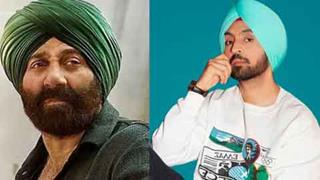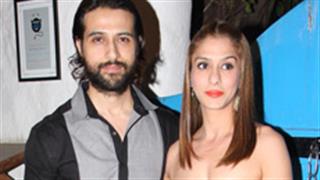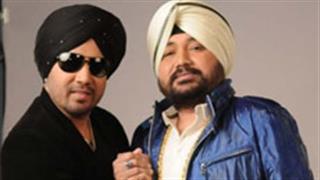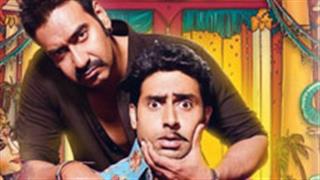In the upcoming film Dhoom 3 Aamir Khan is slated to appear in a new avtar -- that of a baddie. It's pretty obvious that he's playing a key role in the film despite being on the wrong side of law. But is he your quintessential Bollywood Bad Guy? And, while we are at it, do our films have terrifying, tremble-inducing baddies at all these days?
So far, Manoj Bajpai has starred opposite Amitabh Bachchan in three films. In all of them, the former has played characters with grey shades while the latter essayed righteous men. If one takes into account Bajpai's last 10 releases, he has portrayed villainous roles more often than not. So is it safe to assume that this talented actor in particular could very well be the poster boy of what evil stands for in films?

Not really. Though his Sardar Khan in Gangs of Wasseypur possessed the evil of a baddie, he doesn't really terrorise you. His reach seemed limited to the rustic town he inhabited. Compared to him, Gabbar Singh's sinister laughter echoed beyond Rampur, thus pushing the threshold of Sholay.
A similar impact resulted from Amrish Puri's Mogambo in Shekhar Kapur's Mr India. Much before him, stalwarts such as Pran, Prem Chopra, Jeevan and Ranjeet ruled the antagonistic roost with elan. They were capable of doing anything onscreen -- from assassinating the hero's mother to raping his sister to maiming him -- without even caring to blink.
However, as time passed by, these characters started disappearing. On the contrary, the leading actors were allotted more arm space. And by the beginning of the 21st century, the bad guys systematically turned into endangered species.

Perhaps every little thing in cinema is just another phase. Sadashiv Amrapurkar used to portray ruthless personalities in his heydays. Now when he looks back, he quantifies what really happened.
`In earlier films, there was a heavy dose of banawat (artificiality) in the way a villain led his life. He was very different from a common guy and the efforts exposed this fakeness.
Today, you see a lead actor playing negative roles without much of an afterthought and even the villains are closer to reality,` explains the veteran actor who once even portrayed a vile eunuch in Sadak (1991).

In retrospect, such heinous characters seldom greet us in Bollywood products nowadays. The most acceptable excuse would be the changing era.
At least Prem Chopra believes so. `Earlier, the film revolved around a structure where a hero ought to have an opposing force. Now not only the film writers but even the cinema-goers have started reasoning why should that be in movies when real life is far simpler.
This need of justification has gradually worked against the villains,` points out the gentleman because of whom Prem became an undesirable name for babies.

The audience, despite their persuasive silence, have indeed played a part in this transformation. By the end of '90s, the days of dreadful scoundrels were numbered. Shakti Kapoor witnessed this change first hand as he was often seen in roles that demanded lechery as well as sophistication.
`The bad guys of those days were larger than life. Who wants to see unnecessary rapes happening on the big screen? Or for that matter, who would like to see a villain in unbuttoned shirt showing off his gold while throwing attitude?` asks the actor who later switched to comedy.
Speaking of which, evil guys on the big screen at present are usually reduced to caricatures. This peculiar trend gathered strength once Bollywood started taking South remakes way too seriously. Prakash Raj is a prime example of a character actor who is seen in buffoonery-filled negative roles in Hindi movies. In other words, the slot for a real villain appears empty -- not fully occupied.

However, Jaaved Jaaferi, who was recently seen in a negative role in the Ranbir Kapoor-starrer Besharam, prefers to speculate. `Today, detailed villainous characters are rarely written and on top of that, it's generally refused by A-list actors.
There's a reason why a SRK or an Aamir would rather play somebody with a grey personality. They'll never be your bloodthirsty evil guy who will kill or rape at will. We have a long way to go before we'll watch top actors willing to don negative roles without qualm,` says the 50-year-old.
As far as qualms are concerned, newcomers seem to care less about their 'image'. Best known for his disturbing performance in Bejoy Nambiar's Shaitan, Gulshan Devaiah has maintained a steady filmography.
In almost all his movies till date, he has essayed someone who is not your everyday good guy. In fact, his very next release is Sanjay Leela Bhansali's Ram-Leela where he's again playing the antagonist. So doesn't he worry about being stereotyped?

`I can understand the prejudices that certain actors might have against certain roles. But I don't subscribe to the thought process or the complex attached to it. To me, every character has to be different from the ones I've portrayed earlier and as long as that criterion is fulfilled, I don't care whether my role is of the protagonist or the so-called villain,` shrugs Devaiah.
Maybe he's right. It's all about perception. When Gulshan Grover earned the sobriquet of Bad Man due to his choice of work, he was merely providing a voice to the way an evil guy was pictured in those days. The veteran actor, who will be next seen donning a negative shade in Tigmanshu Dhulia's upcoming Bullet Raja, offers a stoic point of view though.
`What's happening in the society is eventually picked up by a film writer. Like it or not, cinema reflects reality. In the '70s, '80s and '90s, the villain looked and sounded different. However, he still holds a temporary edge over the protagonist and that's what makes a story exciting.`

If cinema indeed reflects reality, Bollywood films are clearly overlooking reality in the country.
The real world villains -- unscrupulous politicians and depraved godmen for starters -- ironically have a massive fan following. But is our cinema displaying them in that manner? How many films portray them?
Apparently, the real challenge is to include them into a story. Once that happens, it'd be easier to understand why Bajpai's characters are somehow more restrained than Shakaal.



















